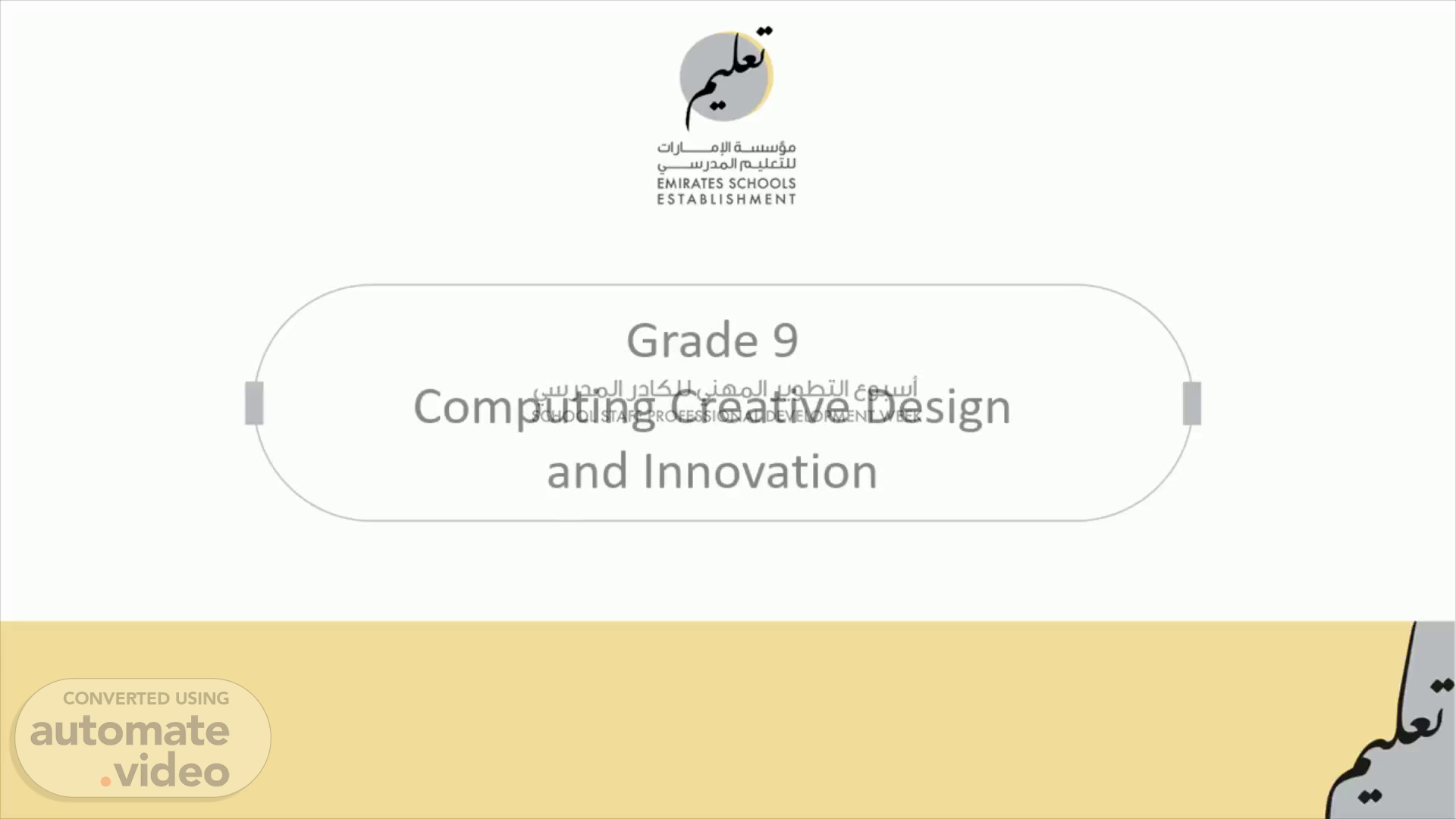
Page 1 (0s)
[Audio] Computing Creative Design and Innovation.
Page 2 (6s)
[Audio] Electricity and Electronics. Electricity and Electronics.
Page 3 (13s)
[Audio] Objectives By the end of the session students will be able to, 1 Understand what are electrical systems? 2 Draw electrical circuit schematic diagrams using standard symbols..
Page 4 (28s)
[Audio] Keyword Atoms the building blocks of life..
Page 5 (39s)
[Audio] What is electricity?. What is electricity?.
Page 6 (50s)
[Audio] Almost every household appliance you have used before relies on electric circuits for their operation..
Page 7 (1m 1s)
[Audio] Such devices include torches, mobile phones, iPods, room lights, or TV sets.
Page 8 (1m 25s)
[Audio] You already know that you need a battery or power switch to turn on these appliances to make them ' work'..
Page 9 (1m 37s)
[Audio] You may not be able to 'see' electricity, but we see its effect every day!.
Page 10 (1m 51s)
[Audio] Nowadays, you use electricity for everything, including cooling, heating, and lighting systems..
Page 11 (2m 4s)
[Audio] You use it to power laptops, mobile phones, and other home appliances. Electricity is also used in transportation systems..
Page 12 (2m 22s)
[Audio] For example, cars use electricity stored in their batteries to power the engine and drive the wheels..
Page 13 (2m 34s)
[Audio] But have you ever wondered how electricity really works?.
Page 14 (2m 45s)
Atoms. Text Description automatically generated.
Page 15 (2m 51s)
[Audio] Atoms are the building blocks of life. Atoms.
Page 16 (3m 2s)
[Audio] Atoms You and everything around you is made up of atoms..
Page 17 (3m 12s)
[Audio] Atoms You cannot see them because they are very small. They are almost 400 million times smaller than a golf ball..
Page 18 (3m 25s)
[Audio] The structure of an atom consists of three main parts: • Protons • Electrons • Neutrons.
Page 19 (3m 36s)
[Audio] Atoms The most important part of an atom is the electron..
Page 20 (3m 46s)
[Audio] Atoms Electrons are charged particles that can move between atoms.
Page 21 (3m 55s)
[Audio] Atoms The movement of the electrons, or the flow of electrons, is called 'electric current..
Page 22 (4m 5s)
[Audio] Atoms This creates an electric charge, which is used to feed and make electronic devices work..
Page 23 (4m 16s)
[Audio] Atoms The electric current is what gives us electricity..
Page 24 (4m 26s)
[Audio] electrical sources The current generated by electrical sources can either be direct current ( DC) alternating current ( AC)..
Page 25 (4m 40s)
[Audio] direct current (D A direct current is one that is steady, constantly going the same way around a circuit, from positive to negative..
Page 26 (4m 53s)
[Audio] direct current ( DC). direct current (DC).
Page 27 (5m 3s)
[Audio] alternating current ( AC). An alternating current is one that continuously changes its direction, going back and forth around a circuit..
Page 28 (5m 15s)
[Audio] alternating current ( AC).. alternating current (AC)..
Page 29 (5m 27s)
Activity 1.1.1. Text Description automatically generated.
Page 30 (5m 37s)
[Audio] Name five things that need electricity to work. Can you guess how much electricity your family uses monthly? How can your family reduce its electricity consumption?.
Page 31 (5m 52s)
electric circuit?. Text Description automatically generated.
Page 32 (6m 0s)
[Audio] What is an electric circuit? An electrical circuit is the path in which electrical current can flow. Depending on the function of the electrical circuit, it can be very complicated or very simple.
Page 33 (6m 16s)
[Audio] What is an electric circuit? Basic circuits are made of the following parts: 1. voltage source (e.g., battery) 2.conductive path (e.g., electric wires) 3. load (electrical component) 4. switch.
Page 34 (6m 40s)
[Audio] What is an electric circuit? The voltage source moves the electric current..
Page 35 (6m 52s)
[Audio] What is an electric circuit? The current travels through the conductive path. This is a path that allows electricity to pass through it (e.g., copper wire)..
Page 36 (7m 7s)
[Audio] What is an electric circuit? The current feeds the load (e.g., a light bulb). This load consumes electrical power and transfers it into a different form of energy (e.g., light, heat, mechanical etc.)..
Page 37 (7m 25s)
[Audio] What is an electric circuit? The switch is a small gap in the circuit that is used to open or close a circuit.
Page 38 (7m 46s)
[Audio] Circuit diagrams. Circuit diagrams. Text Description automatically generated.
Page 39 (7m 55s)
Circuit diagrams. Text Description automatically generated.
Page 40 (8m 8s)
[Audio] Pictorial circuit diagram Using realistic pictures to represent the components of an electrical circuit.
Page 41 (8m 20s)
[Audio] Schematic circuit diagram Using graphic symbols to represent the components of an electrical circuit.
Page 42 (8m 32s)
[Audio] Circuit diagrams Circuit diagrams are used for the design, construction, and maintenance of electrical and electronic equipment..
Page 43 (8m 43s)
[Audio] Circuit diagrams They show the relative positions of the electronic components and their connections to one another. They are often used to provide a visual representation of the circuit to electricians and engineers.
Page 44 (9m 2s)
[Audio] DON'T FORGET WHAT'S IMPORTANT. DON’T FORGET WHAT’S IMPORTANT.
Page 45 (9m 29s)
[Audio] Exit card. Exit card. Text Description automatically generated.
Page 46 (9m 35s)
[Audio] Solve activity 1.1. 2 in LMS. Solve activity 1.1.2 in LMS.
Page 47 (9m 45s)
[Audio] Thank you. Text Description automatically generated.